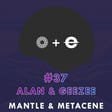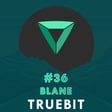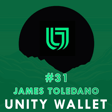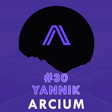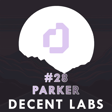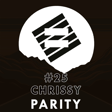
#18 Blockchain Innovations & Token Extensions with Solana Foundation's Head of Strategy
Austin Federa is the Head of Strategy at the Solana Foundation, and a seasoned expert in blockchain technology. In this episode we cover several blockchain innovations including Token Extensions.
Austin's entry into the crypto world was marked by an early setback during the infamous Mt. Gox incident, which temporarily deterred him from the industry. His return was sparked by a project at a fintech startup aimed at developing a borrowing and lending token on Ethereum. Although the project never reached fruition, it was a pivotal moment for Austin, aligning his career with blockchain technology's potential.
The Evolution of Blockchain Use Cases
The conversation delved into the evolution of blockchain applications, from simple transactional uses to complex smart contracts and decentralized finance (DeFi) solutions. Federa highlighted the shift from viewing blockchain through a narrow financial lens to recognizing its broader potential for creating automated, transparent, and secure systems across various sectors.
Solana's Approach to Blockchain Architecture
Austin is particularly enthusiastic about Solana’s approach to blockchain architecture. Unlike Ethereum, which has explored sharding and layer 2 solutions to scale, Solana aims to maintain a single, global state that ensures composability and high throughput. This vision, according to Federa, not only simplifies development on the blockchain but also maximizes its efficiency and speed, addressing some of the most critical challenges faced by competing blockchains.
The Regulatory Landscape and Its Impact
A significant portion of the discussion was dedicated to the regulatory challenges and complexities within the blockchain industry. Austin argued that while regulation is crucial for the healthy development of financial technologies, it often lags behind innovation, creating barriers that hinder the potential growth and adoption of blockchain technology. He cited examples from different regulatory approaches worldwide, discussing their impact on innovation and consumer protection.
DeFi and the Future of Finance
Austin is bullish on the future of DeFi, seeing it as a transformative force in the financial sector. He compared the current state of DeFi to early internet companies, suggesting that while there are risks involved, the potential for DeFi to streamline and democratize financial services is immense. According to him, the challenge lies in balancing innovation with consumer protection, ensuring that as DeFi evolves, it does not replicate the exclusivity and inequities of traditional finance.
Looking Ahead: Solana's Place in a Decentralized Future
As the conversation wrapped up, Austin reflected on Solana's role in the future of blockchain. He emphasized Solana's commitment to high transaction speeds, low costs, and an architecture that supports robust, scalable applications. For Austin, the goal is not just to compete with other blockchains but to contribute to a decentralized ecosystem that offers real solutions to real-world problems.
This podcast is fueled by Aesir, an Algorithmic cryptocurrency Trading Platform that I helped develop over the last 2 years that offers a unique set of features.






